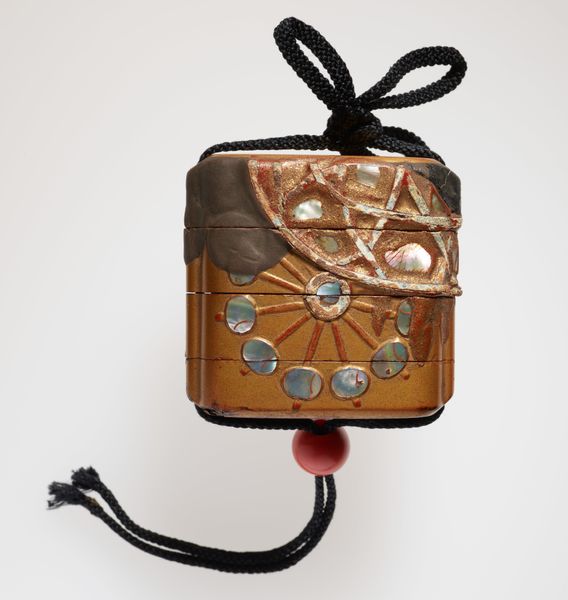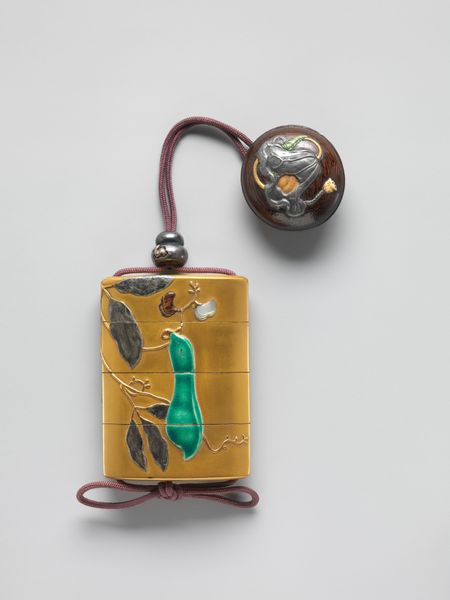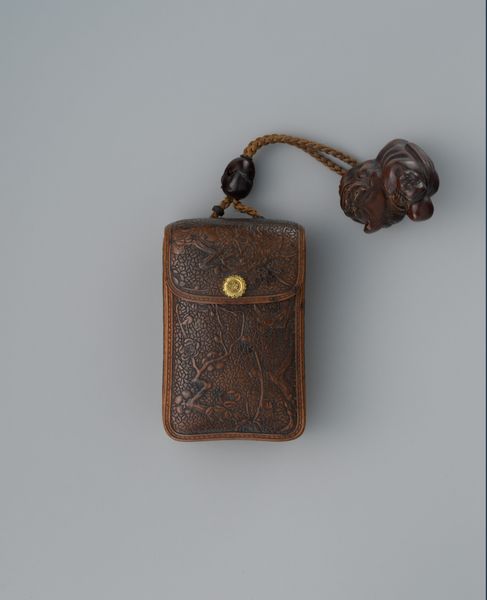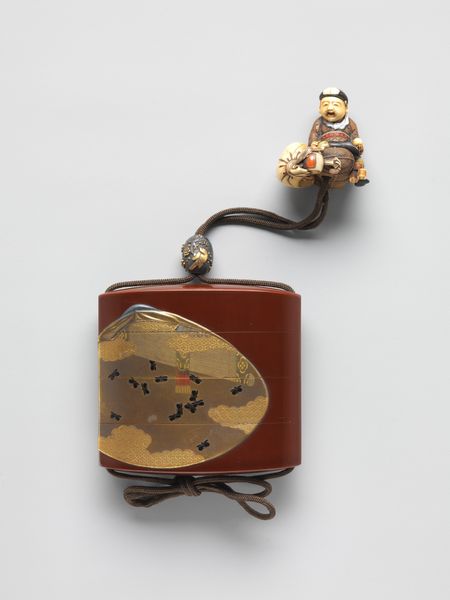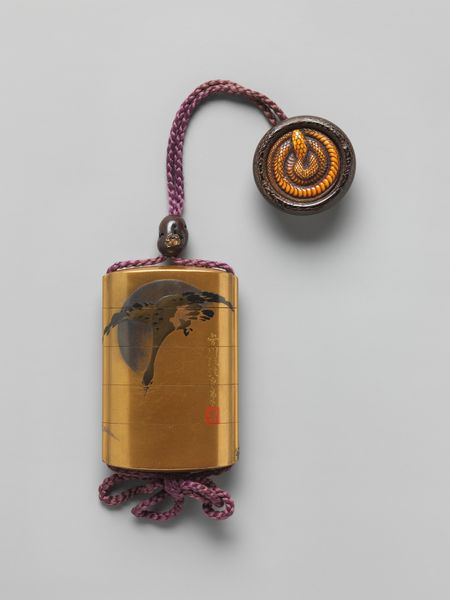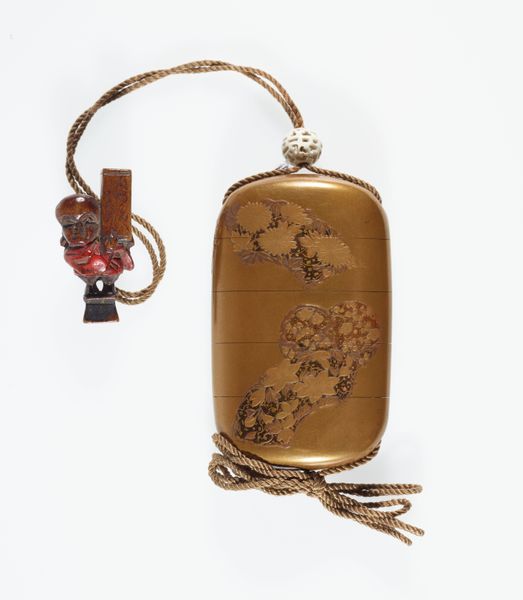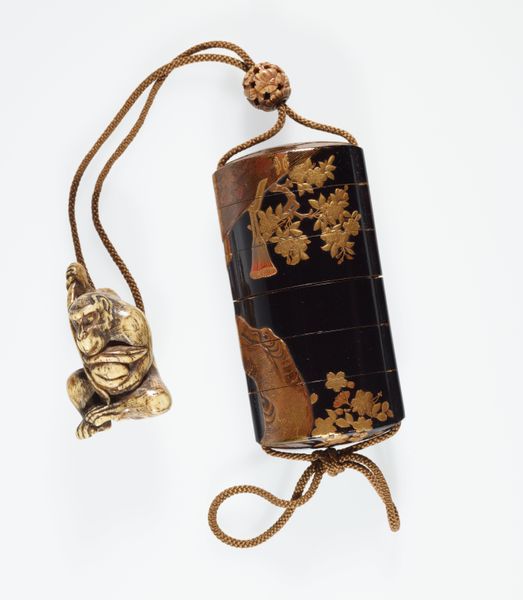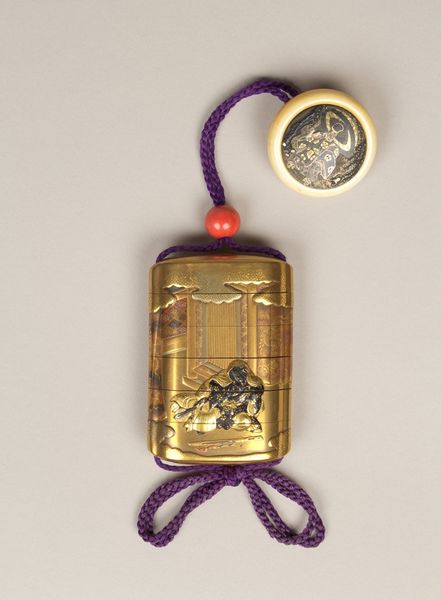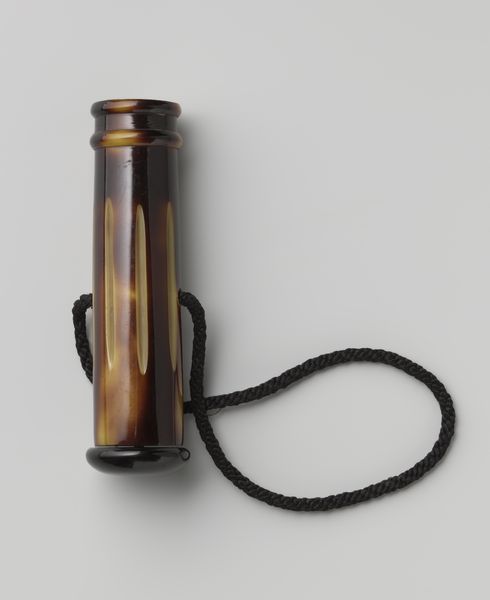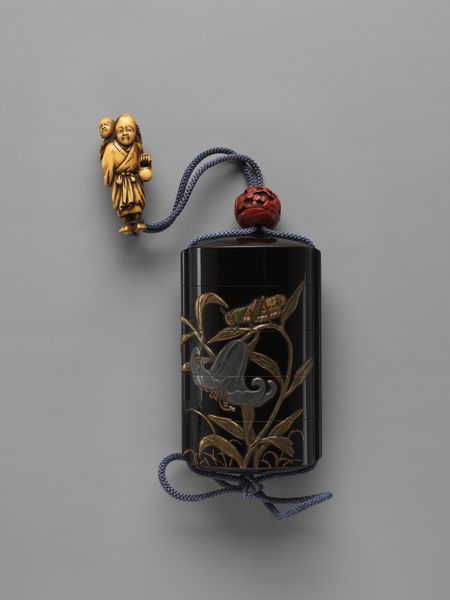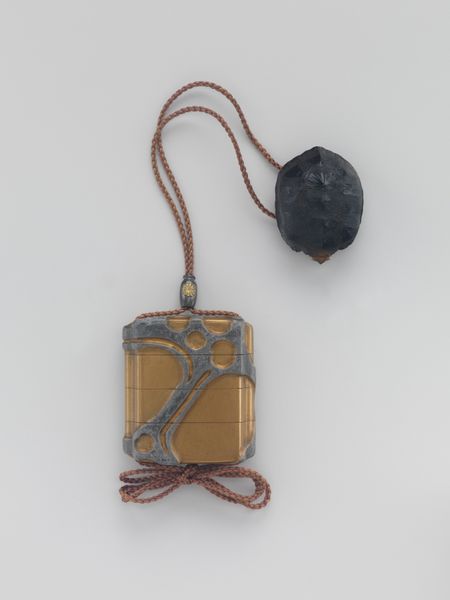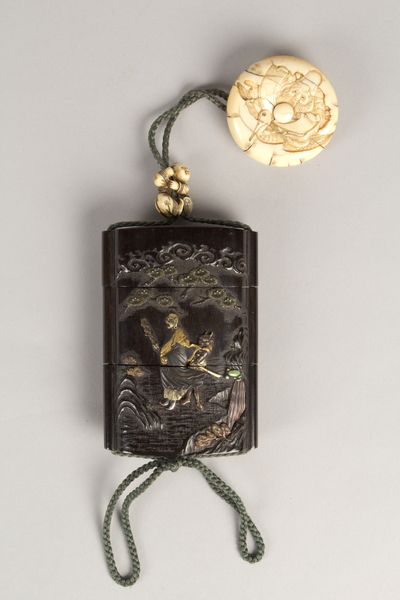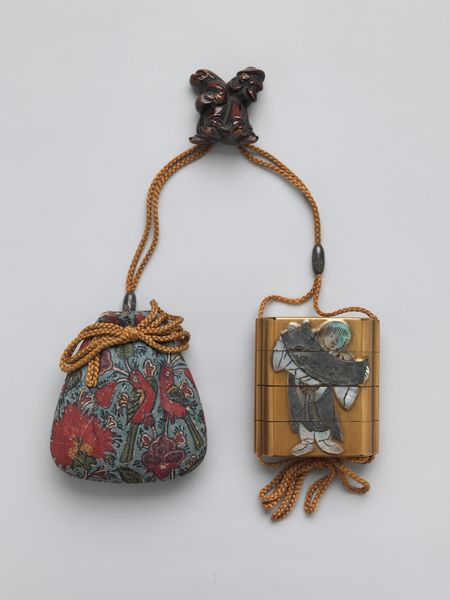
Inrō with Rabbit in the Moon and Autumn Grasses 1800 - 1849
0:00
0:00
wood, ivory
#
asian-art
#
japan
#
wood
#
ivory
#
miniature
Dimensions: 3 3/8 x 1 7/8 x 1 1/8 in. (8.5 x 4.7 x 2.8 cm)
Copyright: Public Domain
This is an Inrō made in Japan in the early 19th century by the artist Kyūkoku. It's a small, personal object, made from lacquer and ivory. It depicts a rabbit in the moon amidst autumn grasses, motifs rich with cultural meaning. In Edo-period Japan, the Inrō served as a status symbol among the merchant class. Though officially ranked below samurai in the rigid social hierarchy, merchants often possessed significant wealth. This elaborate Inrō, with its delicate craftsmanship and symbolic imagery, speaks to the merchant's aspiration for cultural refinement. The rabbit in the moon is a well-known East Asian folk tale, representing immortality and longevity. The autumn grasses suggest a sense of transient beauty, themes common in Japanese art and poetry. Art historians examine sumptuary laws, class structures, and the role of the merchant class in the Edo period to understand the object's social context. Objects such as this inrō highlight how art is always embedded in the social and institutional frameworks of its time.
Comments
No comments
Be the first to comment and join the conversation on the ultimate creative platform.
